The cellulose tissue named SCOBY ‘leather’ is the result of a fermentation process of a mixture of water, tea, sugar, yeast and a bacterial culture. The result is dependent on the mixture and growing time; it can range from as thin as a plastic wrap to thick and sturdy. After drying, application of coconut oil or beeswax ensures suppleness and flexibility. This vegan alternative is also 100% biodegradable.
Kombucha leather is a symbiotic culture of bacteria and yeast (SCOBY). The culture is grown on a growing medium, consisting of:
- Water
- Tea
- Sugar
- Yeast
- A mature culture, sampled from a SCOBY.
The growing process
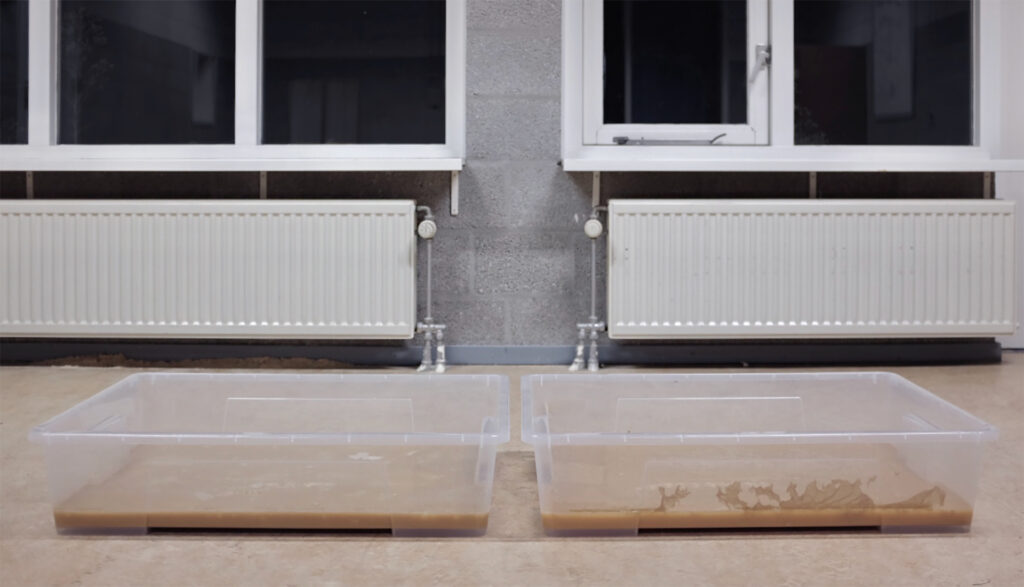
- The process begins with brewing a large batch of tea with sugar, to which the starter liquid (a liquid containing the necessary microorganisms) and yeast are added when the tea has cooled to below 30 degrees.
- The symbiotic culture of bacteria and yeast (also known as SCOBY) grows on top of the liquid medium. The microorganisms grow in number by fermenting the tea with sugar, resulting in a leather-like material.
- The grow time of the kombucha leather is 14 days. The size of the container does not affect the growth time, which is a huge advantage for scaling up production – growing 1x1m will take the same amount of time to grow as a 10x10m pool.
- Then, the material is dried. This takes 1-3 days depending on the size.
- No processing is required unless particular additional properties are desired, such as water resistance.
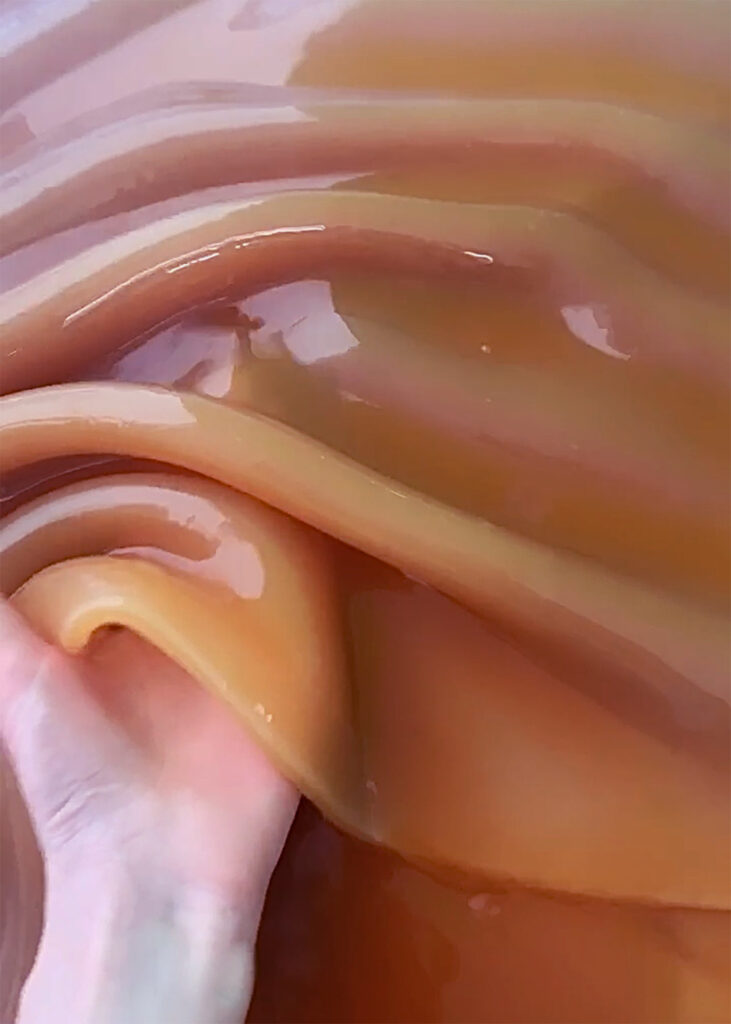
Kombucha ‘Leather’ is grown, not made.
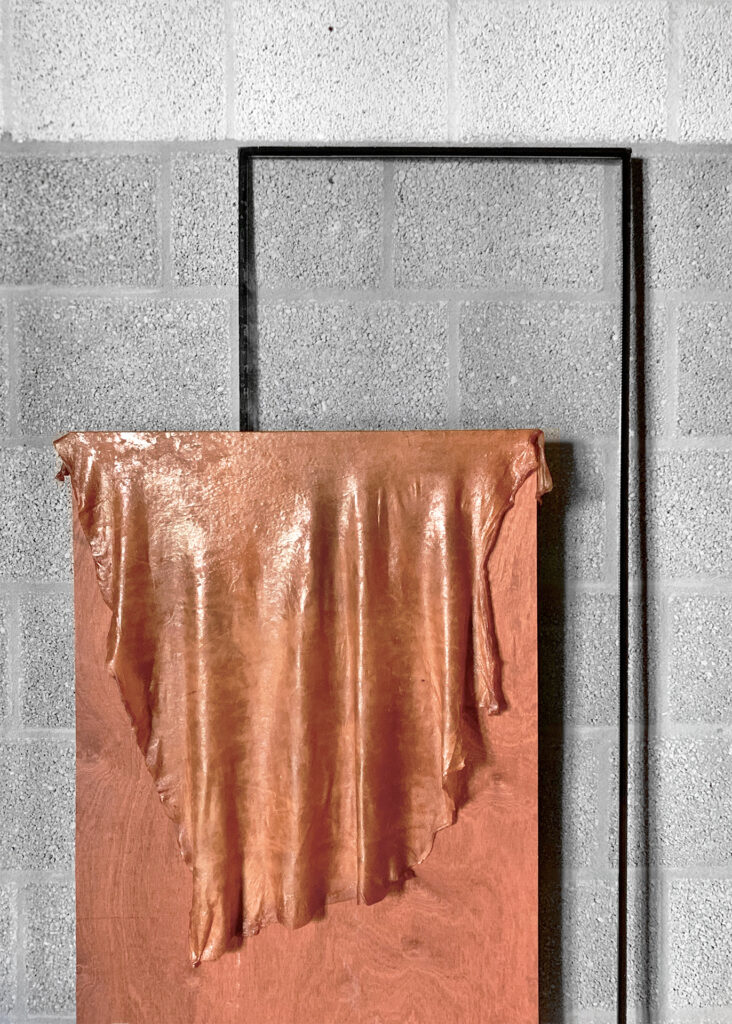
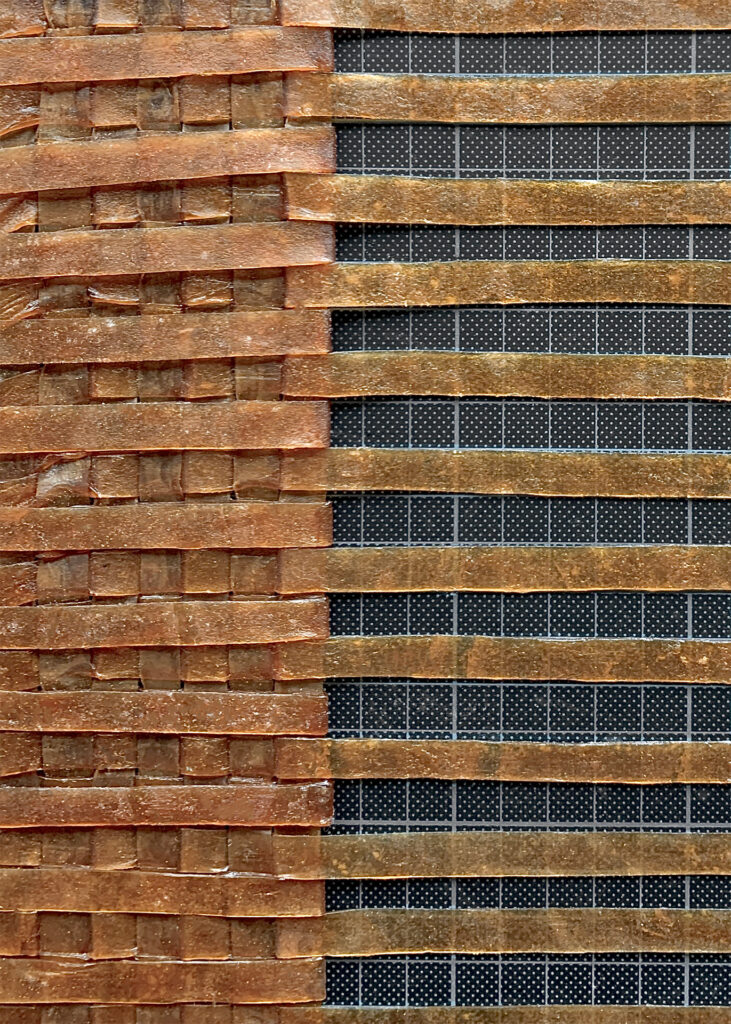
Applied
The material is being used most notably by fashion designer Suzanne Lee. It is not yet widespread, there aren’t many designers working with the material.
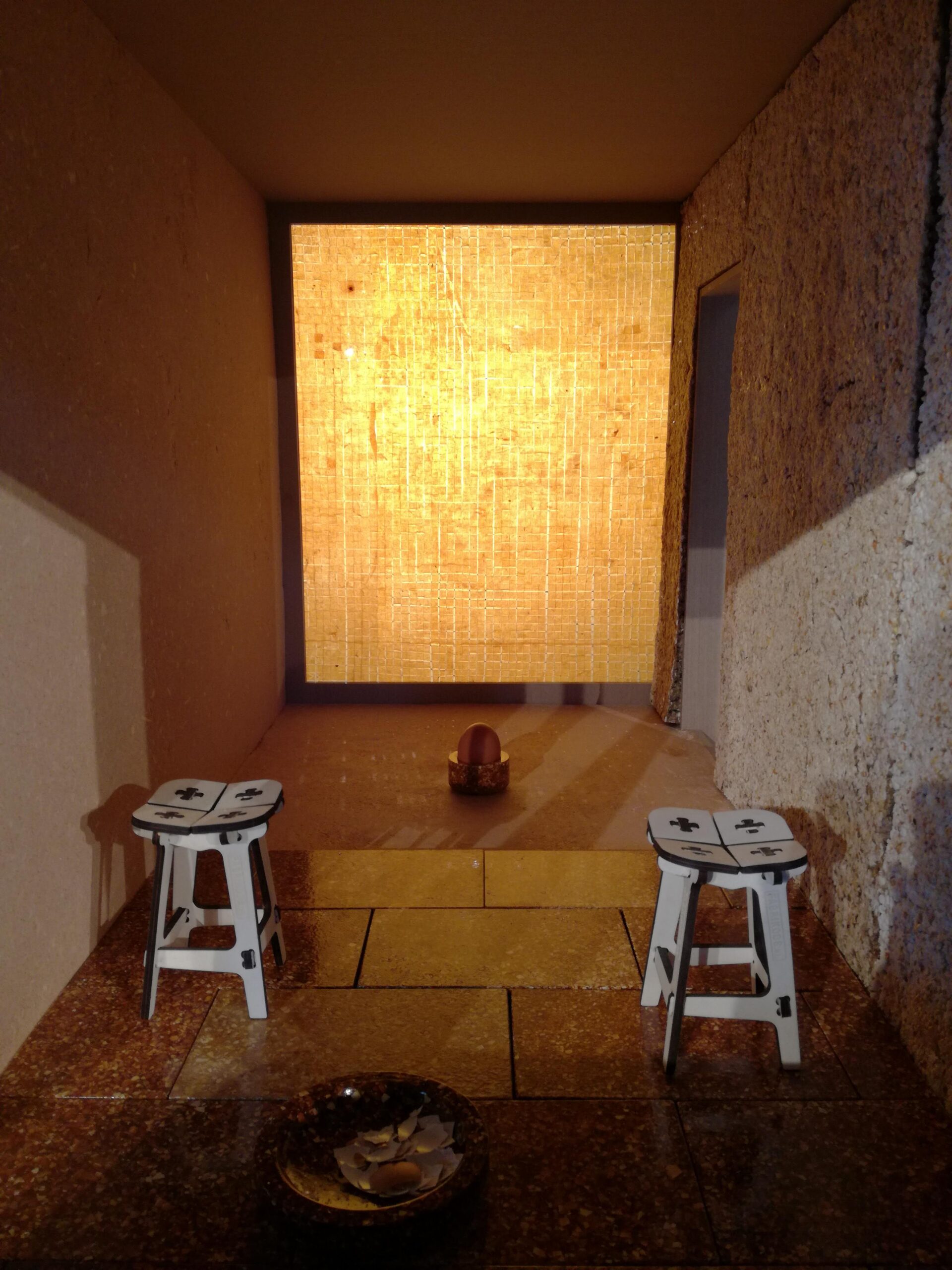
Environmental impact
The material uses only organic raw materials, very little energy and is fully compostable.


